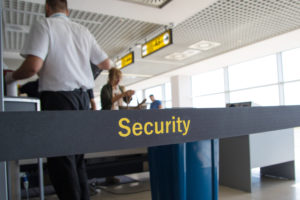Among the premium travel-rewards cards, the Platinum Card from American Express has claimed for itself a singular distinction: With an annual fee of $550, it's the most expensive card in its class. Which leads inevitably to the question of value: Is it worth it?
It's worth noting that until March 30, the annual fee was the same as its fiercest competitor, the Chase Sapphire Reserve card, at $450. But in a move that can be viewed as either cheeky or arrogant, American Express added a couple of new benefits and a hefty $100 to the fee. It can be read as a challenge to consumers and to other cards: We're worth every penny of the sky-high annual fee.
The card comes bundled with a long list of benefits, some of which can be quantified, some of which cannot. Among the former are the following:
- Access to more than 1,000 airport lounges: Total value of the Priority Pass, Delta, and Amex lounge memberships is around $1,000 ($495 for Delta; estimated $350 and $200 for Priority Pass, Amex respectively)
- Airline fee credit: Up to $200
- Statement credit for Global Assist or PreCheck: $100 or $85, depending on which option is chosen
- Statement credits for Uber rides: Up to $200 in annual savings
- Special rates at Fine Hotels & Resorts: Amex cites $550 as the "average" value of this benefit
- Discounts on premium airline tickets booked via American Express travel: Impossible to quantify precisely, but let's say $200
That's not a complete list; rather it's a shortlist highlighting those benefits most likely to be taken advantage of by cardholders, and that are readily quantified in dollar terms.
There are multiple other card benefits that are harder to assign dollar values, such as complimentary Boingo Wi-Fi access, elite status with Hilton and Starwood, secondary car-rental loss and damage coverage, and so on. But if you were to take advantage of just the listed benefits, you would save around $2,250, four times the $550 annual fee.
In addition, in the short term, there's the new member bonus for new Platinum cardholders: 60,000 points after spending $5,000 within the first three months. Assuming the points are redeemed for travel, the bonus alone is worth $600.
The question for prospective cardholders is how much of that potential value they're likely to realize, given their own real-world consumption and travel patterns.
The $200 Uber credit, for example, is actually a $15 credit every month except December, when the credit is upped to $35. That could make it difficult for even regular Uber users to take advantage of the whole $200. Much of the airport lounge value comes from the Delta tie-in. But if you're not a Delta loyalist, flying within Delta's network, those lounges may be inconvenient or downright inaccessible. And that $550 savings for Fine Hotels & Resorts stays? Sounds good, if those hotels happen to be on your itinerary. If you're a Marriott loyalist, however, the savings are zip.
The long list of discounts and extra perks is inarguably compelling; it paints a picture of a lush life on the road, achieved not on the cheap, but with the insider advantage of member-exclusive prices. The platinum lifestyle.
But from a financial standpoint, consideration of this card requires a hard, coolly objective look at nothing less than your entire life. Your real life, not your fantasy life. Quite simply, not all potential savings will translate into real savings.
Look, and look carefully, before you leap.
Editor's Note: This content is not provided by any bank, credit card issuer, airline, or hotel chain. Any opinions, analyses, reviews or recommendations expressed here are those of the author's alone, and have not been reviewed, approved, or otherwise endorsed by the aforementioned entities.






